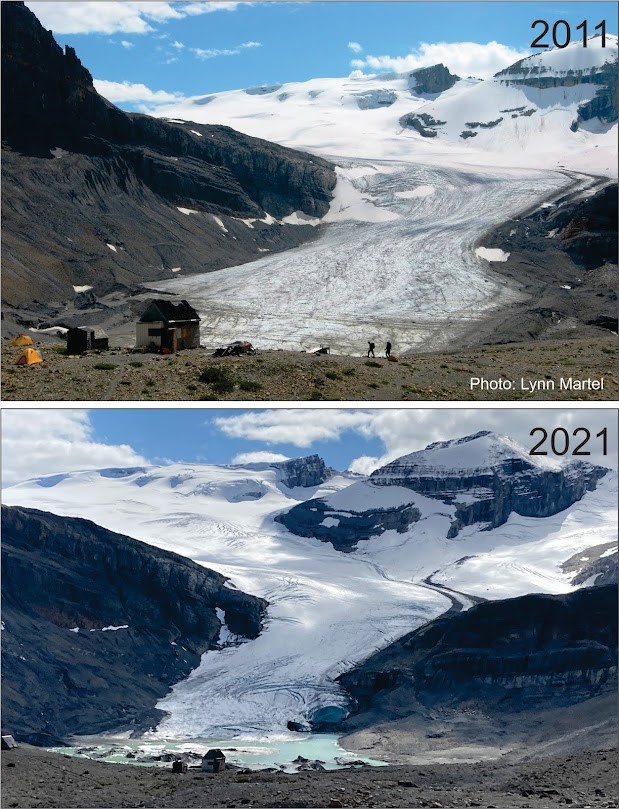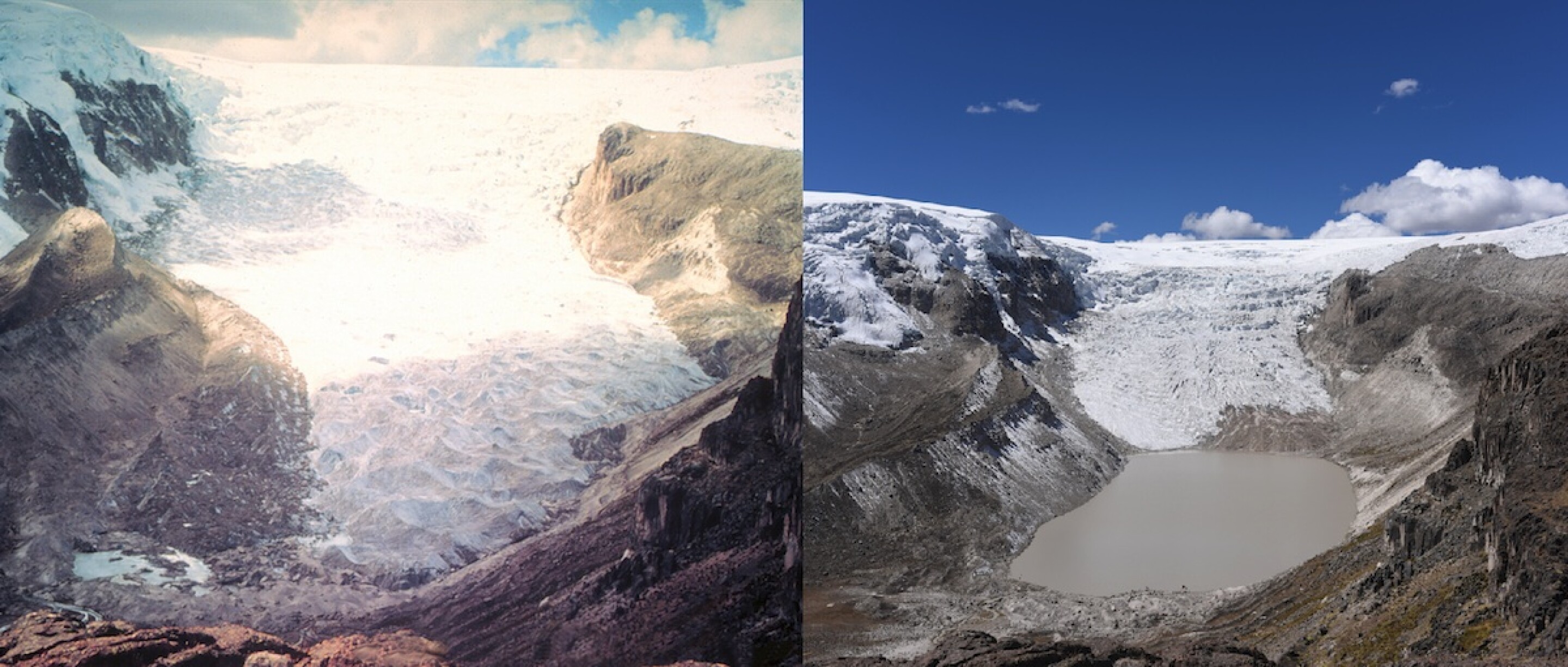Ice Sheet & Glacier Melt
The world's ice sheets and glaciers are melting at an accelerating rate, contributing to sea level rise and changing global climate patterns.
Key Statistics
Greenland Ice Loss Since 1972
0 Gt
Since 1972, Greenland has lost approximately 5,467 gigatons of ice, contributing about 15.2 mm to global sea level rise.
Antarctic Ice Loss Since 1972
0 Gt
Since 1972, Antarctica has lost approximately 4,890 gigatons of ice, contributing to sea level rise.
Global Glacier Mass Loss
0.0 m
Since 1970, glaciers worldwide have lost an estimated 27.3 meters of water equivalent in ice mass, with the loss accelerating over recent decades.
Ice Sheet Loss Trends
Data source: NASA, 2024. The rate of ice loss has accelerated significantly since the 1990s, with Greenland showing the most dramatic increase.
Dramatic Glacier Retreat

Before and after images showing the dramatic retreat of glaciers over time. Many glaciers have lost significant portions of their mass and extent in just a few decades.
Before and After Comparisons
Glacier Retreat Over Decades

These comparative images show the dramatic retreat of glaciers over time, with many losing significant portions of their mass and extent in just a few decades.
Canadian Glaciers (2011-2021)

Canadian glaciers have experienced significant retreat in just a decade (2011-2021), highlighting the accelerating pace of ice loss in recent years.
Causes and Impacts
Primary Causes
- Rising Global Temperatures: Due to greenhouse gas emissions, with polar regions warming faster than the global average (Arctic amplification).
- Ocean Warming: Warmer ocean waters melt ice sheets from below, particularly in Antarctica where floating ice shelves are vulnerable.
- Feedback Loops: As ice melts, darker land or water surfaces are exposed, which absorb more solar radiation and accelerate warming (the ice-albedo feedback).
Key Impacts
- Sea Level Rise: Melting ice sheets and glaciers are major contributors to global sea level rise, threatening coastal communities and infrastructure.
- Freshwater Resources: Melting glaciers are vital freshwater sources for millions, but their rapid retreat threatens water security in many regions, particularly in Asia and South America.
- Ecosystem Disruption: Changes in ice cover affect marine and terrestrial ecosystems, including polar bear habitats, fish populations, and vegetation patterns.
- Ocean Circulation: Freshwater from melting ice can affect ocean circulation patterns, potentially altering climate systems like the Gulf Stream.
Future Projections
The future of ice sheets and glaciers depends on global greenhouse gas emissions and resulting temperature increases. Even with immediate emissions reductions, some ice loss is already locked in due to past warming.
Potential Sea Level Contributions
Complete Melting Scenarios
- • Greenland Ice Sheet: 7.4 meters of sea level rise
- • Antarctic Ice Sheet: 57.9 meters of sea level rise
- • All mountain glaciers: ~0.5 meters of sea level rise
Note: Complete melting would take centuries to millennia
By 2100 (High Emissions Scenario)
- • Greenland: 9-18 cm sea level contribution
- • Antarctica: 10-30 cm sea level contribution
- • Mountain glaciers: 10-25 cm sea level contribution

Regional Variability
Ice loss is not uniform across all regions, with some areas experiencing more rapid changes than others due to local climate conditions and ice dynamics.
Arctic/Greenland
- • Warming at 2-3× the global rate
- • Surface melt and ice dynamics both important
- • Northwest Greenland showing fastest retreat
- • Arctic sea ice declining by ~13% per decade
Antarctica
- • West Antarctica losing ice most rapidly
- • East Antarctica more stable, with some gains
- • Ice shelf collapse accelerating glacier flow
- • Ocean warming driving much of the melt
Mountain Glaciers
- • Alps: Lost ~50% volume since 1900
- • Himalayas: ~30% loss projected by 2100
- • Andes: Critical water source threatened
- • Alaska: Some of the fastest retreat rates